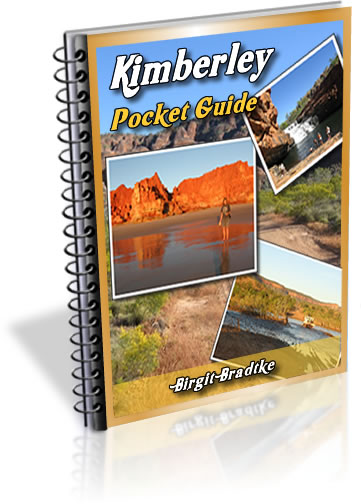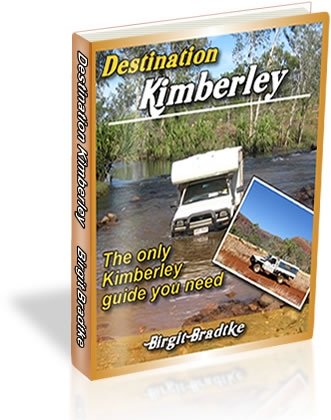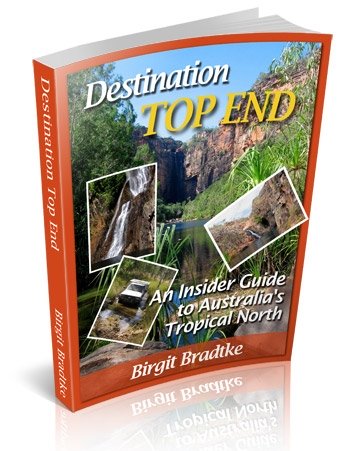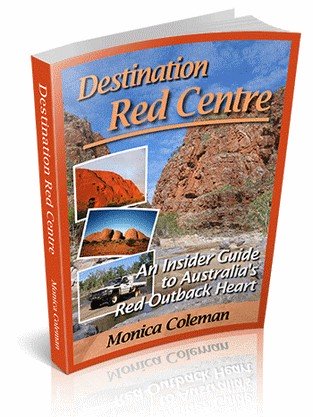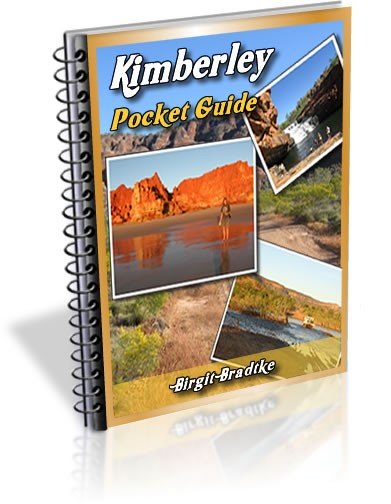The Geology of the Bungle Bungle Range
How the characteristic orange and black striped beehive
domes of the Bungle Bungles were formed.
The full story of the geology of the Bungle Bungle range is a bit too much to cover here.
What people usually want to know is how the striped domes were formed, so here goes ...
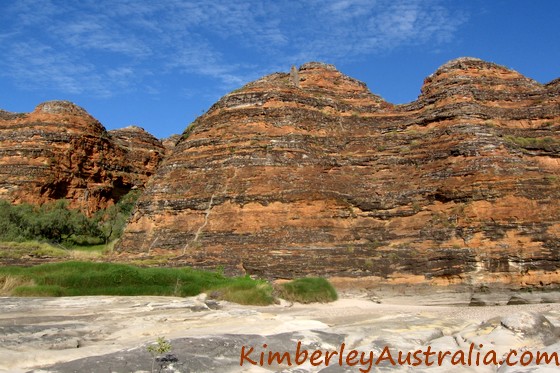
The sandstone formation of the Bungle Bungle ranges is estimated to be 350 million years old, give or take a few millions.
Like the reefs at the Geikie and Windjana gorges the range was formed during the Devonian period. But the Bungle Bungle range isn't part of a reef. It is the sediment of an old river bed. The sediment was laid down in layers, compressed into sandstone and eventually lifted up to form a mountain range.
Originally it was all one big block, with joints and weak areas as a result of the movement. Weathering caused more cracks and the edges wore away in the millions of years of torrential wet season rains, winds, combined with alternating winter freezes and 50 plus degree heat in summer.
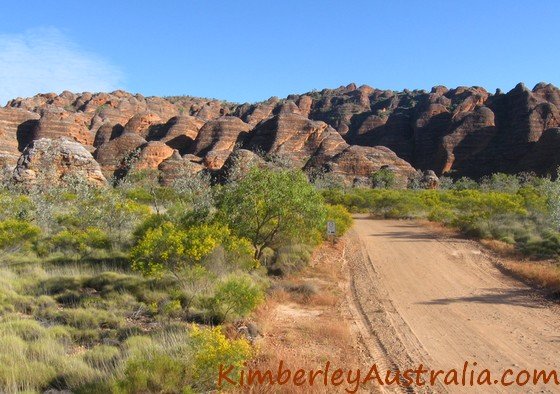 Approaching the Bungle Bungle range.
Approaching the Bungle Bungle range.
The domes are located on the edge of the range. If you fly over the whole range you can see a new area of domes in the making as the erosion continues towards the centre of the massif. Not that we'll see it happen. That will be a few more million years...
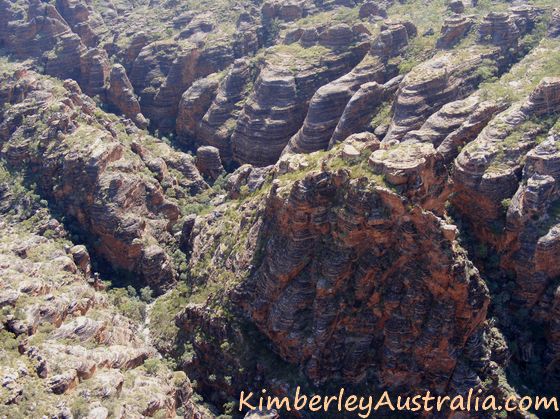 Aerial view of the edge of the Bungles range. © Photo by reader Brenda
Aerial view of the edge of the Bungles range. © Photo by reader Brenda
The dark layers in the sediment/rock have a higher clay content and hold the moisture better. They support cyanobacteria (primitive organisms, previously called blue-grey algae). The bacteria only grow on the surface, a few millimetres into the rock. But that's enough to form a protective outer layer and prevent erosion.
The lighter coloured layers have less clay, are more porous and dry out quickly.
Cyanobacteria can't grow here and without the protective coat the surface is exposed to "rusting".
Oxidisation of the iron in the sandstone gives the range the beautiful orange colour.
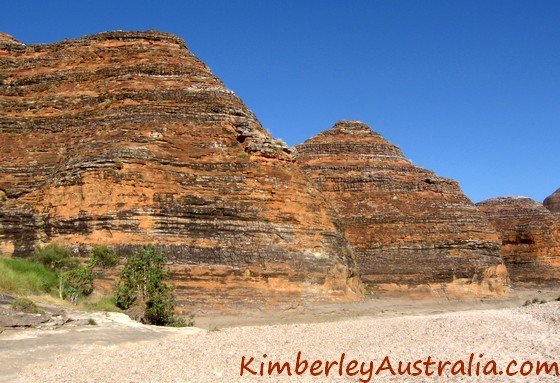 Characteristic Bungles domes alongside Piccaninny Creek.
Characteristic Bungles domes alongside Piccaninny Creek.
The sandstone is very soft and fragile. The raging waters of the wet seasons have washed out wide creeks and deep canyons, steep sided rifts and chasms, not to forget the astounding circular Cathedral Gorge, the result of a massive wet season whirl pool.
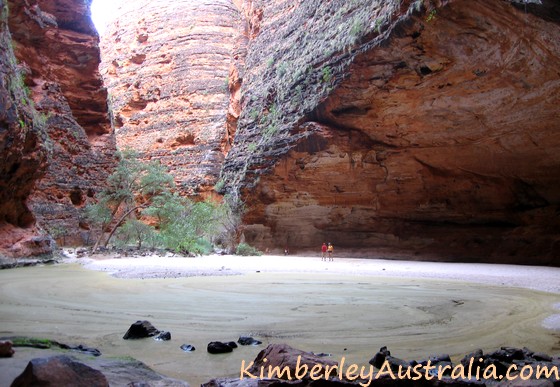 The famous Cathedral Gorge: impossible to capture in a photo!
The famous Cathedral Gorge: impossible to capture in a photo!
Erosion would continue at a much more rapid pace if it wasn't for the easily damaged cyanobacteria coat. This is a very fragile environment, hence you are not allowed to do any climbing or similar. In fact, there are only a few hikes through the range in the Bungle Bungles National Park and you are not allowed to leave the paths.
Most of the range is protected from human feet trampling through it. A helicopter flight over it is the best way to understand the geology of the Bungle Bungle Range and to appreciate the sheer scale of it.
Nothing, however, beats walking through the Bungles. Spending a day hiking in Piccaninny Creek is like a day in a different, magical world, on another planet, in another sphere. It's impossible to compare the Bungle Bungle Range to anything you know.
Next: When to visit Purnululu, weather and temperatures in northern Western Australia.
Bungle Bungles National Park main page.
Travelling to the Kimberley?
The FREE Kimberley Pocket Guide
A great introduction to travel in the Kimberley region and along the Gibb. This free resource will answer all the questions you might have in the early stages of planning a trip.
Destination Kimberley
The full Kimberley travel guide shows you how to make the most of your adventure at Australia's last frontier. Destination Kimberley includes the most detailed and most current guide to the Gibb River Road available anywhere. Also called "The Bible" by its readers.
Travelling to the Northern Territory?
Destination Top End offers the same comprehensive, detailed insider information for the tropical regions of the Northern Territory. Be the best informed traveller in the Kakadu, Litchfield and Katherine Gorge national parks and beyond!
A must have if you travel to or from Darwin.
NEW! Destination Red Centre is the latest addition in this popular series. Monica Coleman takes you through Australia's red Outback heart, offering all the detail and insider tips that you have come to know and love about our guides. With special emphasis on Aboriginal communities and culture.
A must have if you travel to or from Alice Springs/Uluru.
Next: When to visit Purnululu, weather and temperatures in northern Western Australia.
Bungle Bungles National Park main page.
